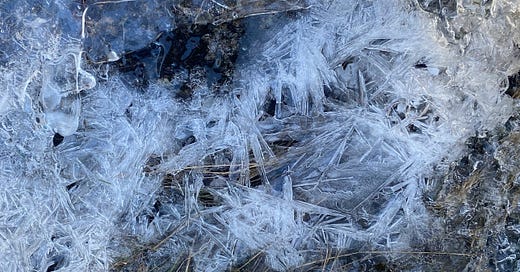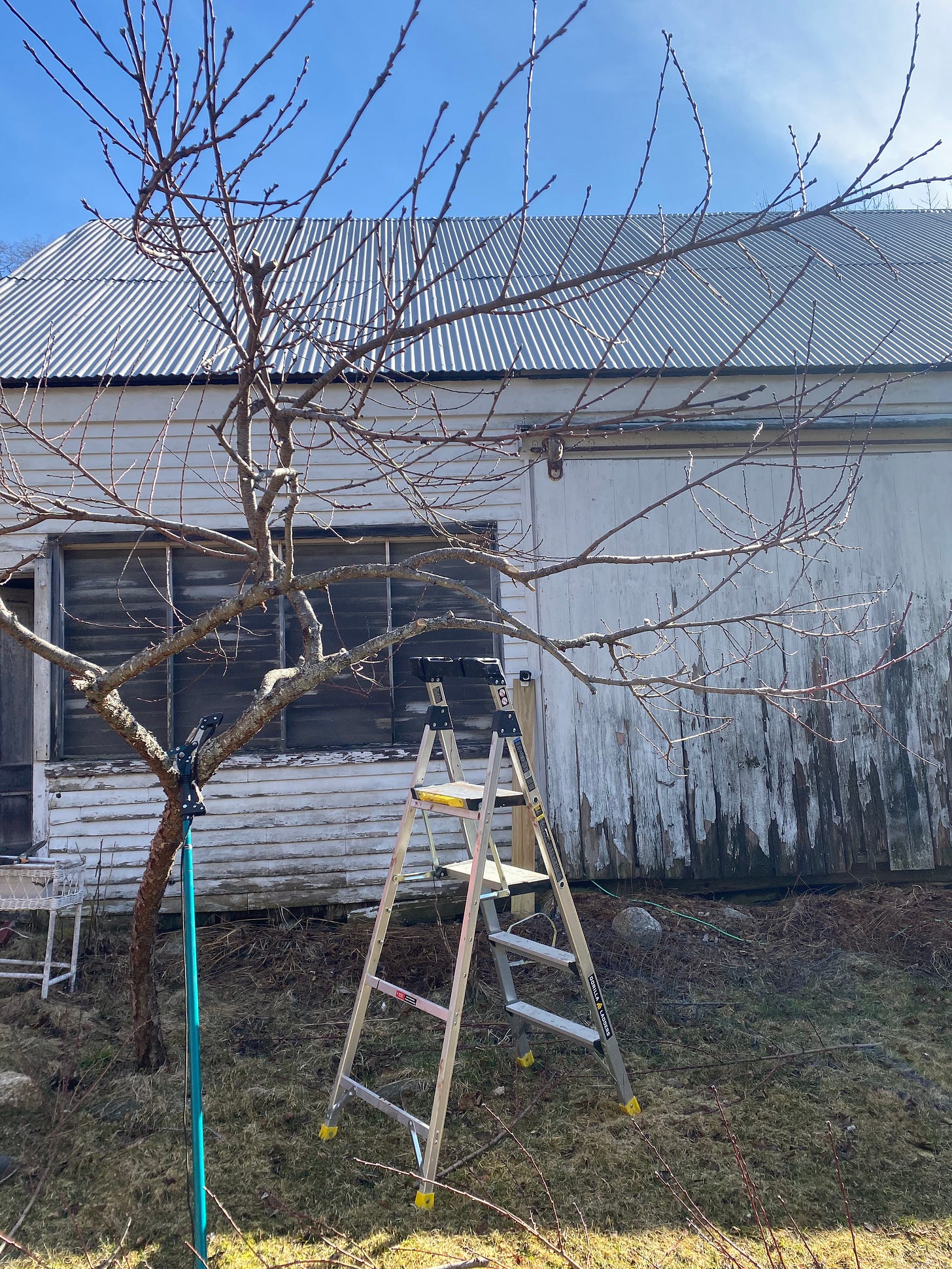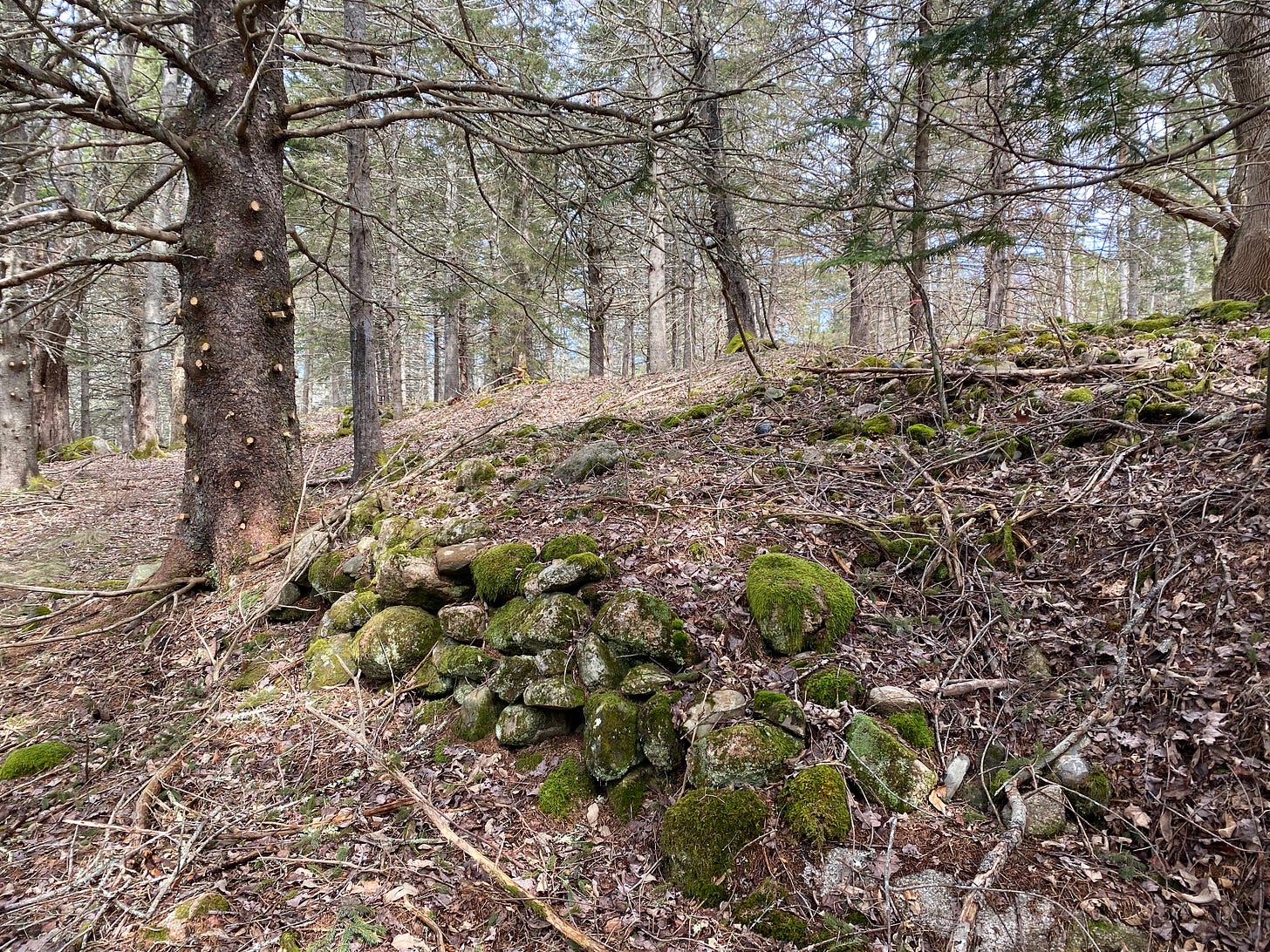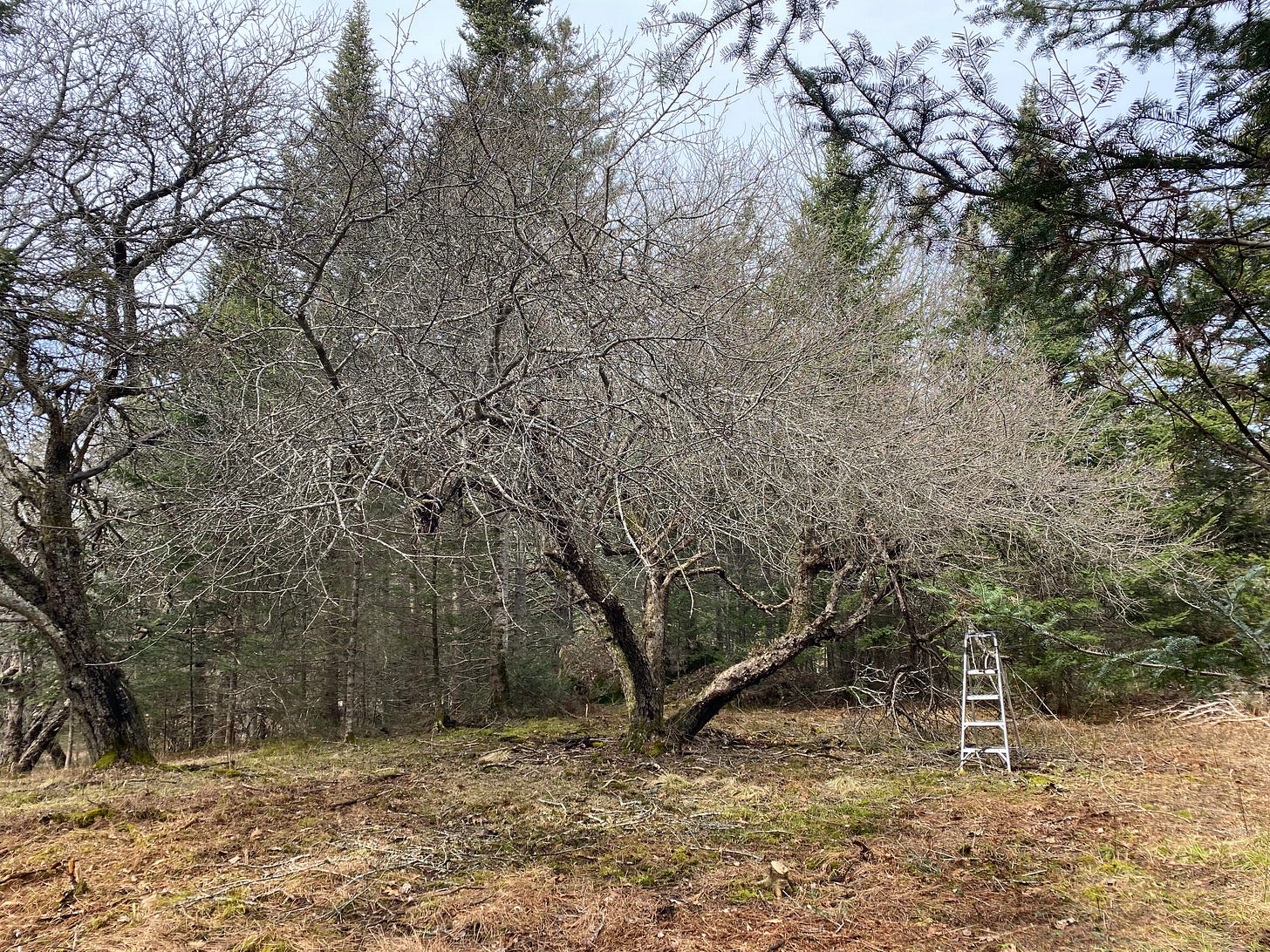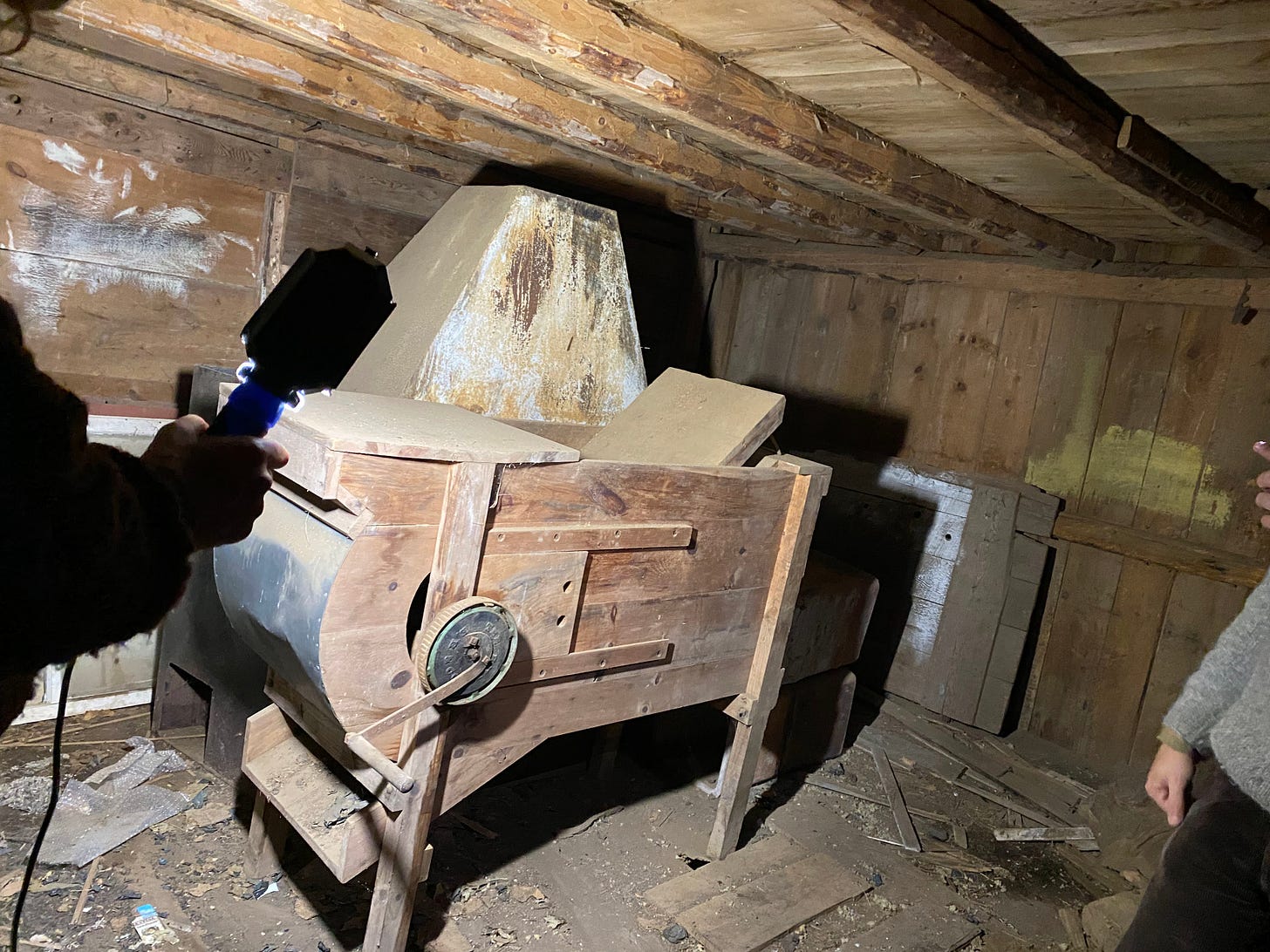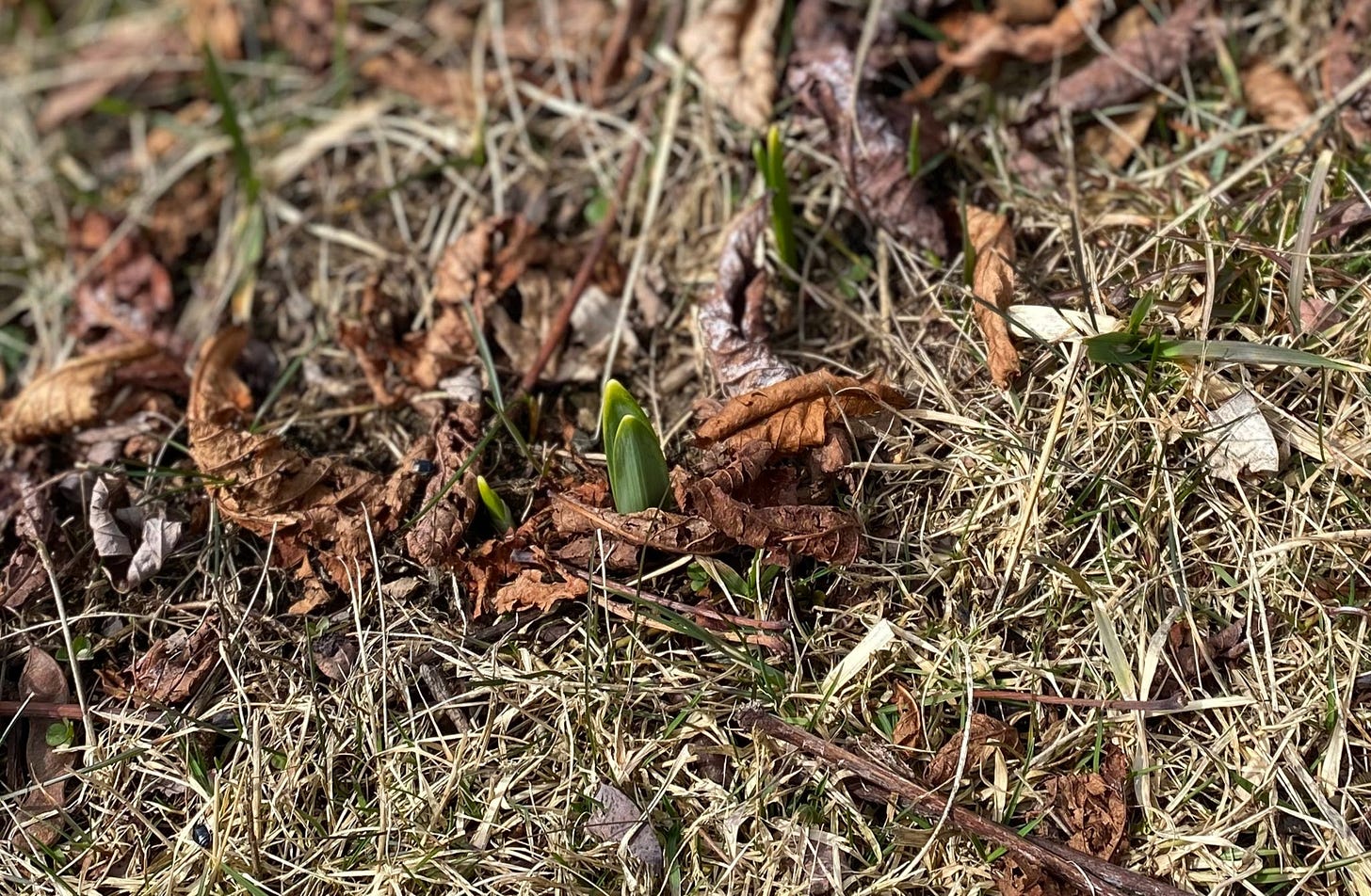The Equinox has passed, the thaw is underway as the temperature gradually warms, melting the snow piles left behind from the repeated winter plowing, and turning the road into squishy mush. Spring begins, and with it, our 3rd year at Rocinante.
Rocinante is the name Beau and I have given our farmhouse — named after Don Quixote's horse. I imagine a portal with a wooden sign arched across it, the word “Rocinante” carved into it, swinging in the breeze like a magic portal into the enchanted forest and along the old farm road lined with mossy stone walls and leading to the farmhouse. The name is probably more apt than we realized when we adopted it: Rocinante apparently is also Don Quixote’s double; like Don Quixote, he is awkward, past his prime, and engaged in a task beyond his capacities. That could well be the reality of the world Beau and I now inhabit on our remote Maine island, but the magic seems to increase with every season that passes at Rocinante.
I have settled into many wildly different communities in my life — my twenties and early thirties in Paris and Lisbon, my child bearing years in Brighton, a seaside city in the UK. For my teen-rearing years, the upheavals of 2008, and my farm-to-table entrepreneurial escapades, I settled in the wild Santa Monica Mountains north of LA — until the Woolsey Fire in 2018 finally landed me in a converted grocery store in Angelino Heights, a Victorian neighborhood overlooking Echo Park Lake in one direction and the sky-scrapers of DTLA in the other. I arrived there just in time to weather the pandemic and then, to finally decide that my California chapter was over and it was time for a new adventure. Hopefully an enduring one. Adapting to each of these new places has been a process, and I know it takes a good 3 years before I begin to feel I’m putting down roots and building relationships in a new place.
Sat by the fire after a day pruning branches, we hear our faithful sump pump, that we now refer to as “Sumpy”, like a beloved pet who sleeps through winter, and awakens dutifully with the thaw. Beau loves how reliable Sumpy is. We can hear him busy at work in the cellar as the Spring Melt seeps through the stone foundations, filling the dirt-floored basement with water. Sumpy never complains, pumping gallons of water out of the cellar onto the grass near the peach tree. I eye the peach tree branches that need pruning (ideally before any spring growth starts) — an activity I knew nothing about prior to arriving here. But I’m learning these things as the rhythms repeat. First we will cut her back, and soon enough there will be peach blossoms, and then we will cross our fingers that no late frosts injure them and dash our hopes for another season of peaches — assuming that once the fruit is ripe it does not succumb to the appetite of our local porcupine (that story, here)— who we are already planning how to deter this year. The anticipation of peaches is a delight.
Last Spring and Fall, we spent hours in the forest, clearing away branches and broken trees, felling the overgrown spruce, and re-opening the old farm road through the woods (story here and here). The forest is dotted with “habitats” where we stacked the branches, opening a path to the stone arch, the apple orchard, along the stone wall, and through the birch to the mailbox at the bottom of the hill — our preferred route as an option to taking the icy (or currently terribly muddy) road. For the last few months we have snow-shoed through the woods, but now with the snow melted, the piles of sticks still remaining on the paths have all been revealed again.
There is so much mud on the road up to our house, currently, that we know to leave the car down at the bottom of the hill, and until further notice, we will walk to the house through our forest trail, and past the grove of forest apple trees which we started pruning this weekend. We know now that the apples come out every other year — and since we had no apples (or pears) last fall, we have already been thinning the growth around them, and planning which spruce need to come down to bring them more light, hoping we can gradually coax them back to life this season. The massive great grandmother tree had multiple broken limbs hanging amidst dense shoots of growth, and we are careful not to shock it by taking away too much at a time.
The scale of our landscaping projects around the property this year feels daunting — from pruning the fruit trees, to clearing the patch of bittersweet strangling a line of trees bordering the road up to the house, to continuing work on our forest trails and adding in some stepping stones across the parts where water tends to flow, to improving the structures in the garden to support our snap peas, tomatoes, shell beans and other veggies we have been moderately successful with over the past 2 summers, as we get to know the land here. The garden is a giant experiment, and each year we learn new things. Beyond the veggie garden is the blueberry field, which we plan to finally burn this spring, and hope to revive. It is currently overgrown with deep grasses — but the low-bush blueberry is still very much alive — as is the blueberry winnower in the barn — the crank even turns.
We see the vernal pond filling with water as it does every Spring — Beau even spotted a salamander in the wood pile, and since the snow melted last week, we have visited the fruit trees we have planted here and there over the past two years — a weeping willow by the pond, and peach, cherry, pear, chestnut, quince and plum trees around the barn and the veggie garden. They are still small but they have taken. The rhubarb that Beau planted is showing signs of life but the crowns that have been growing at the bottom of the barn, since before we arrived, are covered in leaves, so I can’t tell if they are reaching to the light yet. I’m already planning rhubarb pie. So far, the shiitaki plugs we inoculated in the red maple stump have not shown signs of life, but we continue to live in hope. The strawberry and raspberry starts lovingly mailed to me by my friend Priscilla, from her River’s Edge farm in upstate New York, have also taken, and we see the daffies we planted our first autumn here, peeking up around the well. The tulips we planted for the second year in a row are awakening along the warm south wall. I recognize the 2 different black cats that periodically run under the barn, the red fox, the fat skunk, and the rather small raccoon.
Inside the house, we look forward to pulling out the window inserts which have gotten us through a second winter, toasty and warm - the ones we built as part of a community event (I tell that story here). I’m planning a wall of shelves to house our collection of books and records, thinking about how we can optimize our closet ever since my clothing Purge, and vaguely intending to repaint the Sewing Room (as we fondly call this guest room) — all “nice to have” tasks, not “need to have” like they were when we first arrived…
And outside the portal to Rocinante, there’s our neighbors and community, who seem to be getting used to seeing us around, through the winter months — half this island is summer people — and gradually warming to us as well. Or so we hope. My piano students have almost completed a full year of studies. I have a space for my business in the converted elementary school in Stonington, just down the road near the lobster port. I know Tiffany, the post mistress, by name, and saw her perform a monolog in the iconic performance of “Island Women Speak”. Yet another yearly town meeting has been concluded (our third now!), with some discussion of the shellfish warden’s duties.
The beginning of year three, the routines are setting in, we are getting to know the people here, getting to know our island. It is so apt that we moved into our home during the thaw in 2023, just days after the Spring Solstice, when the weather had warmed enough to turn on the water. Every Solstice will mark another milestone for us, another cycle beginning again. And maybe, just maybe, by the end of the year I will feel like my roots have taken hold in my new home, like the trees we planted, growing into the seasons, and with any luck we will have built our portal in the forest and the the Rocinante sign will swing in the breeze, as it does in my Quixotic mind’s eye.


